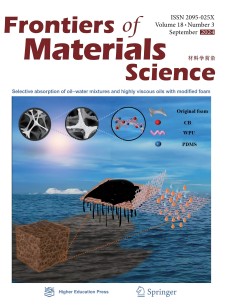Biomimetic construction of oriented lamellar Col/nHAP composite scaffolds and mediation of macrophages to promote angiogenesis and bone regeneration
Abstract
Pore characteristics have been identified as key design parameters for osteoimmunomodulation. The strategy reported here is to create an appropriate immune microenvironment by regulating pore characteristics of scaffolds, thereby promoting early angiogenesis and enhancing osteogenesis. A series of collagen/nanohydroxyapatite (Col/nHAP) composite scaffolds with ordered lamellar structures and different layer spacings were prepared by mimicking the ordered lamellar topology of the bone matrix. Our research indicated that the layer spacing and ordered topology of the scaffold exerted an important influence on phenotype transformation of macrophages and the secretion of angiogenic factors. The Col/nHAP-O(135) with large layer spacing not only supported cell attachment and diffusion in vitro, but also promoted early angiogenesis by timely switching from M1 to M2 macrophage phenotype. In vivo data showed that the layer spacing and the ordered structure of the scaffold synergistically regulated the inflammatory response and triggered macrophages to secrete more angiogenesis related cytokines. Col/nHAP-O(135) considerably promoted the neovascularization and new bone formation in the defect site, indicating that Col/nHAP-O(135) could significantly enhance the osteogenic activity of stem cells with the involvement of macrophages.

 求助内容:
求助内容: 应助结果提醒方式:
应助结果提醒方式:


